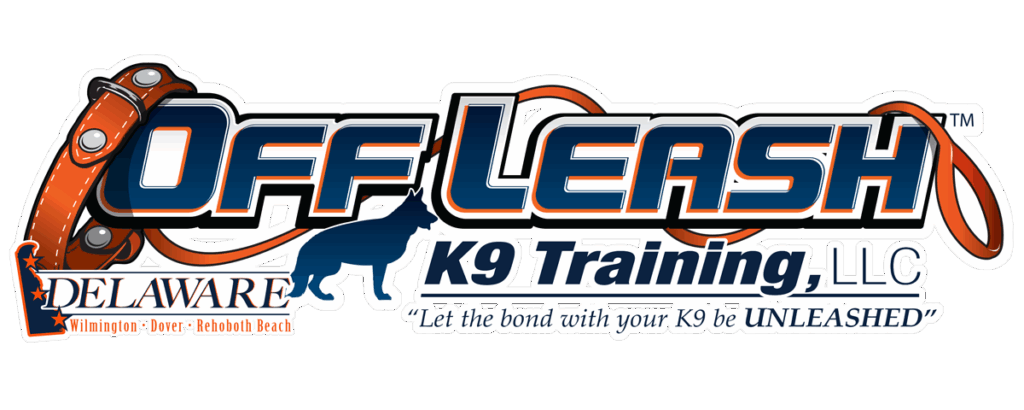Are you struggling to keep up with your high-energy dog during runs? You’re not alone. Running with an energetic dog can feel like trying to control a furry tornado, but it doesn’t have to be this way. The key to successful runs with your energetic dog lies in proper training, safety measures, and exercise techniques. Whether you have a bouncy Border Collie or an enthusiastic German Shepherd, we’ll guide you through transforming those chaotic walks into enjoyable adventures. In this comprehensive guide, we’ll explore: • Essential training techniques to establish better control • Safety measures to protect both you and your furry friend • Exercise strategies tailored for high-energy breeds • Tips for creating a structured running routine Get ready to discover how to harness your dog’s endless energy into a positive running experience that benefits both of you. Let’s turn those challenging walks into rewarding bonding moments.
Assessing Your Dog’s Running Potential
Understanding your dog’s running potential is crucial before embarking on a running routine together. Let’s explore the key factors that determine if your canine companion is ready to be your running partner.
Breed-Specific Energy Levels
Different dog breeds have varying natural energy levels and exercise requirements. Working and sporting breeds like Border Collies, Australian Shepherds, and Labrador Retrievers typically make excellent running partners due to their high energy level and endurance. On the other hand, brachycephalic breeds (flat-faced) such as Bulldogs or Pugs may struggle with extended running sessions due to breathing difficulties.
Your dog’s breed characteristics can significantly influence their running capabilities. While some breeds are natural athletes, others may be better suited for shorter, less intense activities. Consider consulting breed-specific resources to understand your dog’s inherent exercise needs.
Health Considerations Before Starting
Before starting a running routine, it’s essential to evaluate your dog’s unique health characteristics. Schedule a veterinary check-up to ensure your furry friend is physically ready for increased activity. The vet can assess factors like:
– Joint health and bone development
– Cardiovascular fitness
– Respiratory function
– Overall muscle condition
– Weight and body condition
Age is another crucial factor to consider. Puppies shouldn’t engage in sustained running until their growth plates have closed, typically around 12-18 months depending on the breed. Senior dogs may also need modified exercise routines to accommodate their changing physical capabilities.
Essential Training Foundations
Running with your energetic dog starts with establishing solid training foundations. Before hitting the trails or pavement together, it’s crucial to develop a strong communication system and basic obedience skills.
Basic Commands for Safe Running
Start with proper leash training to ensure your dog walks politely by your side without pulling. Use positive reinforcement techniques, rewarding your pup with the right training treat when they maintain the desired position. Essential commands like “heel,” “stop,” and “leave it” create a safer running experience.
Teaching your dog to focus on you amid distractions is vital. Practice these commands in low-distraction environments first, gradually progressing to more challenging situations. This builds their confidence and reliability in following your lead during runs.
Building Endurance Gradually
Just like humans, dogs need time to build their running stamina. Begin with short intervals of jogging mixed with walking. Pay attention to your dog’s body language and energy levels to avoid overexertion.
Start with 5-minute running segments, followed by walking breaks. As your dog’s fitness improves, slowly increase the duration of running intervals. This gradual approach prevents injury and builds sustainable running habits.
Remember to check your dog’s paw pads regularly for signs of wear and tear. Running on rough surfaces can be tough on their feet, so consider starting on softer terrain like grass or dirt trails.
Consistency is key in building endurance. Maintain a regular schedule of training sessions, allowing adequate rest days for recovery. This helps your dog develop both physical stamina and mental focus for longer runs.
Safety Measures During Runs
Weather Considerations
Running with your energetic dog requires careful attention to weather conditions to ensure their safety and well-being. In warm weather, dogs are more susceptible to overheating due to their limited ability to cool down through panting. Always check the temperature before heading out and avoid running during peak heat hours.
During extreme weather conditions, it’s crucial to either modify your running routine or skip it altogether. If the pavement is too hot to hold your hand on for 5 seconds, it’s too hot for your dog’s paw pads. Consider running early in the morning or later in the evening when temperatures are more moderate.
Watch for signs of heat exhaustion in your dog, such as excessive panting, drooling, or lethargy. Carry water and take frequent breaks to keep your furry friend hydrated and comfortable.
Terrain and Surface Selection
Choosing the right running surface is essential for protecting your dog’s paw pads and joints. Natural surfaces like grass or dirt trails are generally easier on their paws compared to concrete or asphalt. These softer surfaces also provide better shock absorption, reducing the risk of joint stress and injury.
Be mindful of terrain variations and potential hazards:
– Avoid areas with sharp rocks or debris
– Stay away from surfaces treated with chemicals or salt
– Choose well-lit paths for evening runs
– Stick to familiar routes initially
Before tackling challenging terrains, gradually build up your dog’s paw pad strength through consistent exercise on gentler surfaces. Consider using dog booties for additional protection, especially when running on rough or hot surfaces.
Creating an Effective Running Routine
Establishing a consistent running routine with your energetic dog requires careful planning and consideration of various factors. Let’s explore how to create a schedule that works for both you and your furry friend.
Timing and Frequency
Start by determining the best times for your running routine based on your dog’s energy patterns and your schedule. Most dogs are naturally more active in the morning and evening, making these ideal times for runs. Begin with shorter sessions 2-3 times per week, gradually increasing the frequency as your dog builds stamina.
Consider the weather conditions when planning your runs. Early morning or late evening sessions work best during summer to avoid heat stress, while midday runs might be more suitable during cooler months. The duration of your run should align with your dog’s fitness level and energy needs.
Distance Planning
When it comes to the amount of physical activity, start conservatively and build up gradually. Begin with shorter distances of 1-2 miles and observe how your dog responds. Pay attention to their breathing, pace, and overall enthusiasm during and after the run.
For adult dogs in good health, aim to increase the distance by no more than 10% each week. This gradual progression helps prevent injury and ensures your dog maintains enthusiasm for the running routine. Remember that different breeds have varying exercise capacities, so adjust your distance goals accordingly.
Monitor your dog’s behavior after runs to gauge if they’re getting enough exercise. If they’re still highly energetic hours later, you might need to increase the distance or frequency of your runs. Conversely, if they seem exhausted, consider scaling back.
Managing High-Energy Dogs
Managing a high-energy dog requires a balanced approach combining physical activity and mental engagement. These furry bundles of boundless energy need proper outlets to maintain their well-being and prevent destructive behaviors.
Additional Exercise Options
For a hyper dog, traditional walks might not be enough. Consider incorporating high-intensity activities like fetch, agility training, or swimming. These activities help burn excess energy while strengthening the bond between you and your pet. Create an exercise routine that includes multiple short sessions throughout the day rather than one long session.
Interactive play sessions with other dogs can also help tire out your high-energy dog naturally. Dog parks or supervised playdates provide excellent opportunities for socialization and energy release. Remember to always monitor these interactions to ensure safety.
Mental Stimulation Techniques
Physical exercise alone isn’t enough for a high-energy dog. Mental stimulation is equally crucial for their overall well-being. Puzzle toys, treat-dispensing balls, and hide-and-seek games can keep their minds engaged while burning energy.
Training sessions are another excellent way to provide mental stimulation. Teaching new tricks or practicing obedience commands helps channel their energy into productive activities. Consider incorporating nose work or scent games, which naturally tap into their instincts while providing mental enrichment.
Monitoring Your Dog’s Progress
Signs of Fatigue
When running with your energetic companion, it’s crucial to understand your dog’s ability and recognize signs of exhaustion. Watch for heavy panting, slowing pace, or excessive drooling. These indicators help prevent overexertion and ensure a safe workout for your furry friend.
Pay attention to subtle changes in behavior, like frequent stopping or lying down during runs. These signs, combined with the inherent traits of your dog, will guide you in adjusting the intensity and duration of your running sessions.
Performance Improvement
Track your dog’s progress by noting improvements in endurance, speed, and recovery time. Start a simple log to record distance covered and running duration. This data helps you understand how your pet adapts to the exercise routine over time.
Look for positive changes like better leash manners, increased stamina, and quicker recovery between runs. Remember that progress varies based on breed, age, and fitness level. Celebrate small victories and adjust goals accordingly to maintain motivation and prevent burnout.
Special Considerations
Running with Multiple Dogs
Managing multiple dogs during a run requires extra attention and preparation. When running with more than one dog, maintain proper spacing between them to prevent tangling of leashes. This becomes especially crucial if you’re also watching a small child while running.
Start by training each dog individually before attempting group runs. This helps establish individual control and ensures each pet understands basic commands. Consider using different length leashes to create a staggered formation, reducing the risk of dogs crossing paths.
Insurance and Safety Coverage
Before embarking on regular running sessions with your dogs, review your pet insurance coverage. Many providers offer multi-pet discount options, making it more affordable to insure all your running companions. Ensure your policy covers accidents that might occur during exercise activities.
Look for insurance plans that include coverage for injuries sustained during physical activities. This is particularly important when running with multiple dogs, as the risk of accidents may increase. Some policies also cover third-party liability, protecting you if your dogs accidentally cause injury to others while running.






